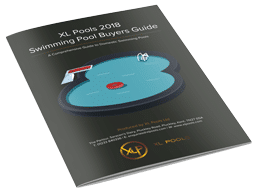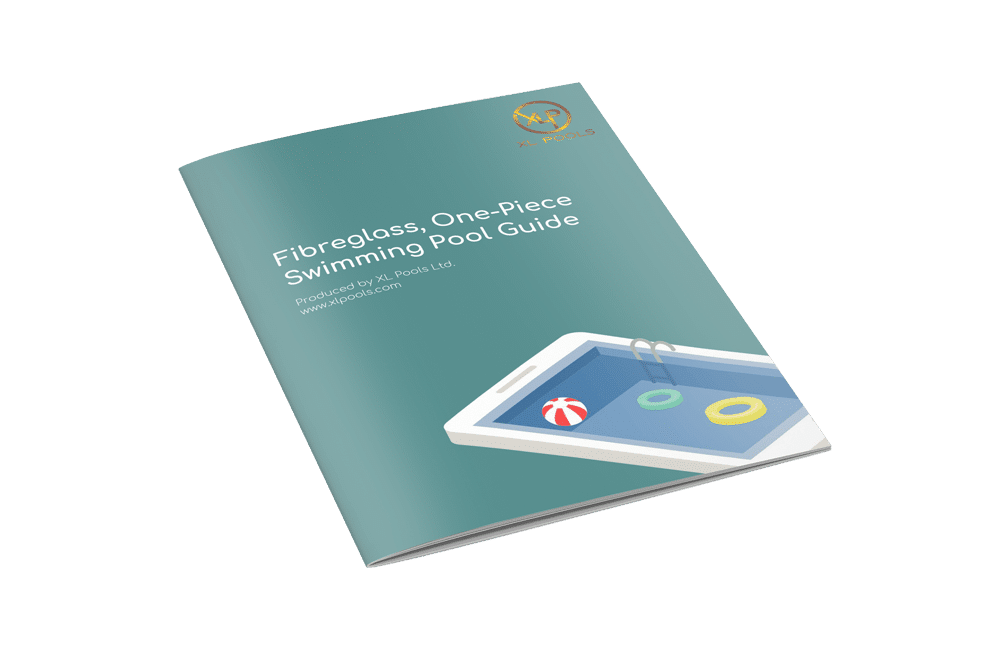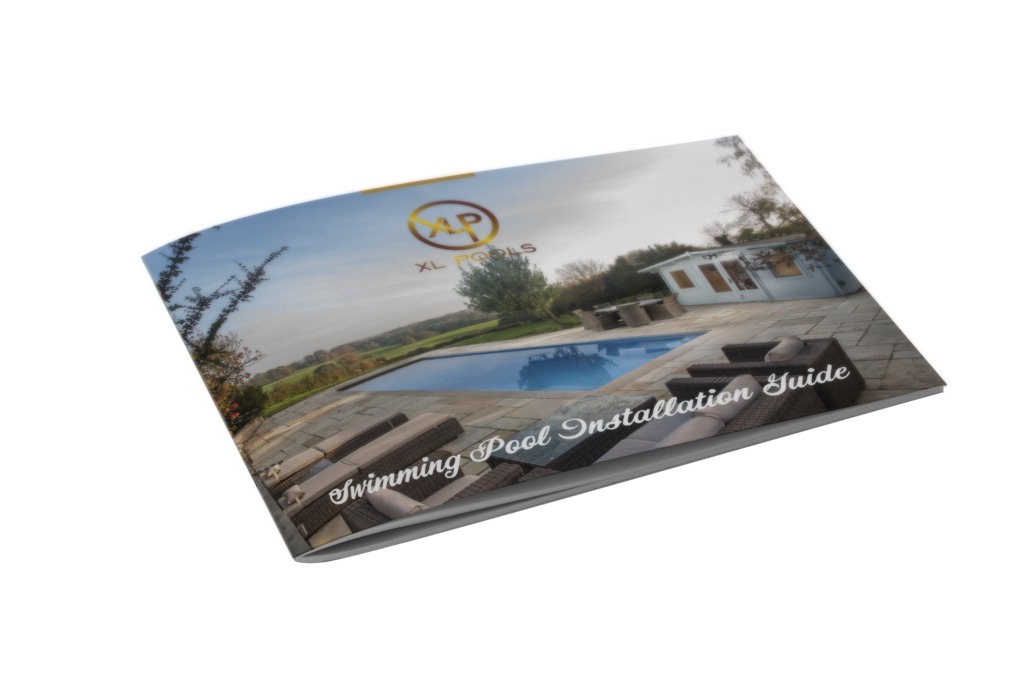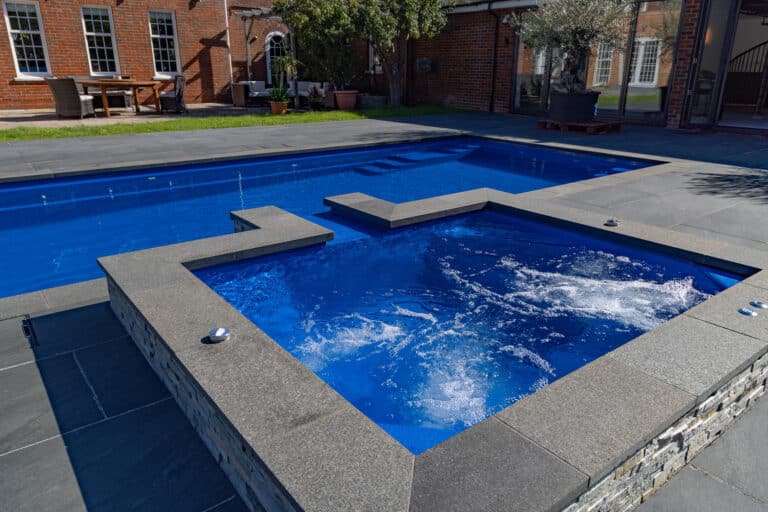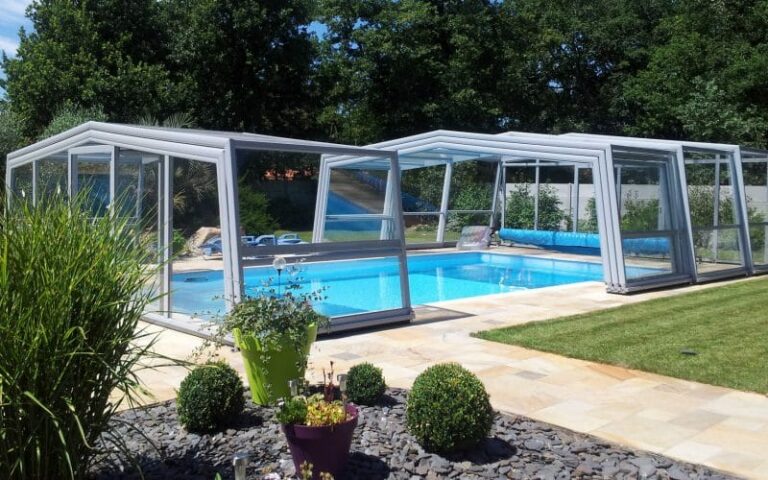Any of the pool construction methods described in the previous article can be utilised to build an outdoor pool. Outdoor pools do have their own particular design considerations which you need to be aware of, including but not limited to…
Proximity to the house.
How close is the pool to be to the house for changing and showering facilities? If the pool is to be used for extended periods of the year, a relatively close proximity to the house is desirable in order to minimise the walk from the pool back to the house in the cold. If the pool is to be located some distance away, think about the paths to the pool from the house. Areas of lawn between changing facilities and the pool area are to be avoided so that dirt, mud, animal dropping, grass-clippings and other associated debris are not carried on bather’s feet into the pool where they will place an unnecessary demand on the pool sanitising chemicals and necessitate more pool cleaning.
Planting round the pool.
All planting near the pool area should be thought out to ensure that leaves and stems are not sharp or prickly, ideally non leaf-dropping (certainly during the main summer season) and not poisonous or irritating. Most garden plants and lawn grasses are resistant to pool chemicals at the tiny concentrations to be found in pool water and are therefore unaffected by pool water when exposed to it. However, some species may be particularly sensitive so, if you have particular concerns or especially valuable plants, please consult with your plant supplier, garden centre or horticulturist.
Paving/Surround types.
The paving or pool surround and pathway materials should be carefully chosen to ensure safety of people and prevent excessive ingress of contamination into the pool water, as well as aesthetics. Surfaces should be non-slip, not riven or unduly uneven, not sandy or loamy, and be laid over a suitably stable base. Special consideration must be given if very heavy items, i.e. garden buildings or hot tubs are to be positioned. As well as traditional stone and stone-like materials, many synthetic decorative pool surround surfaces are also available.
Lighting.
Outdoor lighting is vital for ensuring safe use of the pool area and any pathways to and from it at night. IP66 rated outdoor switching and sockets in useful locations may also be beneficial. Care must be taken to ensure that whilst lighting should be aesthetically pleasing, it should also be functional yet not be a nuisance to any neighbours which may be affected. All electrical work must be undertaken by a suitably qualified electrician and certified to Part P of Building Regulations. See Section*** re underwater lighting.
Outdoor sound systems.
When specifying outdoor sound systems, always ensure that speakers and other equipment, including any wiring, installed outside the house is specified for outdoor purposes. When installing speakers, avoid the temptation to mount a pair on a building facing the main socialising area and rely on volume control to project the sound to all parts of the garden. This would potentially result in the volume being overpoweringly loud for those close to the speakers, whilst the sound may not adequately reach farther reaches of the garden. It could also prove a nuisance to neighbours. A better solution would be to mount speakers at regular intervals around the perimeter of the garden attached to trees or on posts and pointing inwards. Speakers disguised as rocks are also available to install at ground level. That way, the volume can be maintained at a relatively low level, whilst at the same time ensuring that sound reaches all parts of the garden desired. As with electrical installations, it is recommended to seek the advice and expertise of a suitably qualified professional.
Poolside Buildings
In many installations, particularly those where the pool is some distance from the main house, clients choose to erect an adjacent building. If your client is considering doing so, ensure they clearly specify their needs, which will guide the type and size of the building. Generally, buildings are of the wooden chalet or log building type. These usually do not require planning permission and come under permitted development. However, in some instances planning permission may apply (see section on planning), especially if the building is considered to be of a more permanent nature, or services (electricity, water, drainage) need connecting to it. If in doubt, always consult your local planning department. Also, will the building be required for changing, showering or entertaining? Will multiple rooms need to be incorporated within it? If the pool is removed from the main house and a poolside building is to be erected, it would make sense to also incorporate the pool plant-room within it to minimise installation costs and the length of pipe runs.
Safety / security.
Whilst there are not yet statutory obligations governing pool safety in the UK as there are in countries like France or Australia, consideration to pool safety and security must be given, especially where there are young children in the family, to prevent unauthorised access to the pool at times when there is no adult supervision, and therefore minimise the risks of accidental drowning. Measures to evaluate would include fencing the pool area off with a suitable fence and lockable gate, a purpose-made safety cover (a cover which complies with French standard NF P90-308 is considered a safety cover – check with the manufacturer as most pool covers are not considered safety covers unless stated), a certified alarm system (water sensors or infra-red beams which set off the alarm when triggered), or an enclosure which can be fixed in place and locked.
Covering.
Any outdoor pool requires some kind of cover which should be in place over the whole surface of the pool at all times when the pool is not in use, primarily to prevent evaporation and therefore the greatest heat losses from the pool surface. There are a range of covering materials available to consumers which vary greatly in terms of capital cost, and likewise with quality, efficacy and lifespan. The cheapest available are of the ‘bubble’ type, which are made from a synthetic material akin to thick, blue-coloured, bubble-wrap. Not only does this type of cover eliminate evaporation, the trapped air bubbles also offer solar-gain when the sun shines. This heats up the trapped air in each bubble, the energy from which is then transferred to the cooler water. Other types of cover include heavy duty foam, which is more resilient in quality than the bubble type, but does not impart any solar gain. At the upper end of the spectrum are the motorised slatted type cover. Here, the cover is made up of a series of many PVC slats with a trapped air chamber. This trapped air chamber gives the cover its buoyancy and also its insulation properties. Some automatic slatted covers are certified as safety covers, especially when coupled with a ledge or handrail, and some offer translucent slat options to benefit from solar gain. The covers roll and unroll automatically on and off the pool at the flick of a switch via an internal electric motor.
Telescopic Pool Enclosures & Domes
Telescopic pool enclosures have gained in popularity in recent years. They resemble a tapering conservatory which spans the pool and a proportion of its surround. They offer a great solution to those consumers who like the idea of an indoor pool at times when the weather is not being kind, and to extend the length of the swimming season in the Spring and Autumn, whilst at the same time allowing the benefits of an outdoor pool at times when the weather is hot and sunny. It does this by folding up one of the ends and then telescoping each modular section up into the opposite end on rollers or special tracks. Some are even motorised for ultimate ease of use.
Pool domes are clear PVC structures which are secured on the deck surrounding the pool by way of steel anchors or integral bags filled with water to weigh it down. The structure is then inflated like a large balloon and is kept up by maintaining a higher pressure within the dome than that outside. Access to the inside is usually via a zipped entrance. As with other enclosures, a dome affords protection from inclement weather and extends the usable swimming season in Spring and Autumn.

